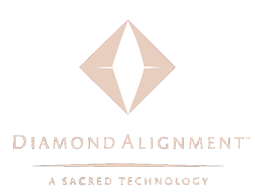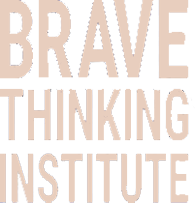 Is intelligence something that can be seen on a person’s face? If we are talking about predicting a person’s IQ score with a tiny margin of error, then probably not. Researchers claim that there are at least 23 different kinds of intelligence. Since our faces reflect our thoughts and feelings, it is not surprising that we will find quite a few facial clues to help us answer this question.
Is intelligence something that can be seen on a person’s face? If we are talking about predicting a person’s IQ score with a tiny margin of error, then probably not. Researchers claim that there are at least 23 different kinds of intelligence. Since our faces reflect our thoughts and feelings, it is not surprising that we will find quite a few facial clues to help us answer this question.
“A man’s face is his autobiography. A woman’s face is her work of fiction.”
– Oscar Wilde
What is your definition of intelligence? Is it someone whose mind is filled with data that might make them a trivia winner on the TV show Jeopardy? Or do you prefer intuitive intelligence where you don’t know how you arrived at the answer but you know that you are right? Or, is intelligence for you having the ability to take unrelated things and put them together to create a practical result? Finally, we can’t forget the category of emotional IQ to name but a few.
These types of intelligence are not mutually exclusive but each of us probably excels in one kind of intelligence over another. In this article, we will consider how 3 different kinds of intelligence will manifest on the face. We begin with mental development lines on the forehead and then will consider emotional intelligence. Finally, we discuss how intuitive intelligence may also appear on a face.

As humans, all of us are face readers and most of us have an instinctual reaction to facial features. For example, round shapes on faces are seen by even small babies as nurturers. For intelligence, we look at foreheads. When I show a picture of two men and ask which one is the science and math teacher, the majority of people pick the one with the largest forehead as the brainy one. But that is not enough information to draw a conclusion about the person’s degree of mental development. Luckily our faces are their own self-diagnostic. Mental development shows up in a variety of places.
Photo credit – adobe.com
Horizontal lines on the forehead show the degree that the person has worked to stretch their mental abilities. Three long parallel lines stretching across the forehead indicate an intense mental effort, perhaps the equivalent of earning a graduate degree. A single deep line, as shown above, corresponds to an intense focus in a particular area of interest. They have one area of highly developed expertise.
Eyebrows that have the same amount of hair all the way across are called even eyebrows. They indicate the person’s ability to connect the dots and see all related aspects quickly and easily from “A” to “Z”. High ears and low eyebrows indicate the ability to quickly grasp the information and then to quickly evaluate and respond. While low ears process slower and prefer wisdom over speed. Once again, intelligence comes in many forms.
Emotional Intelligence
 Some types of intelligence can’t be found in books but rather come from our intense life experiences. What comes to mind is the old age that “whatever doesn’t kill us, makes us stronger.” The woman pictured here has practically every line that I mention in my book. Most notable are the compassion and survivor lines and the courage lines on her cheeks. This woman is a sensitive soul who has been hit with circumstances that could have killed a weaker person.
Some types of intelligence can’t be found in books but rather come from our intense life experiences. What comes to mind is the old age that “whatever doesn’t kill us, makes us stronger.” The woman pictured here has practically every line that I mention in my book. Most notable are the compassion and survivor lines and the courage lines on her cheeks. This woman is a sensitive soul who has been hit with circumstances that could have killed a weaker person.
Photo of Nepali_woman,_Ghyaru.jpg: travelwayoflifederivative work: Bruce1ee – This file was derived from Nepali woman, Ghyaru.jpg:, CC BY-SA 2.0, https://commons.wikimedia.org/w/index.php?curid=22165582
Her face is marked by her personal hardships and reveals that she has faced untold fear. However, she does not appear to be embittered and hardened by life’s challenges, but rather gentle and accepting. Her face reflects a depth of character and inner wisdom. Her life experiences have resulted in a strengthening of her spirit that can allow her to be emphatic with others who endure similar challenges.
Several years ago there was much discussion about Emotional Intelligence or EQ. Without even referring to those writings, there is no doubt in my mind, that this woman and people like her get high marks in this kind of intelligence.
Intuitive Intelligence
 As we go through life we make a mental record of our life experiences. Most of this data is stored at a subconscious level. What makes something familiar to us is our ability to find a pattern that has been stored in our memory and then immediately apply it to our new experience and find a match. Our ability to do this resides in a part of our brain that is faster than thought. Some people become particularly gifted in knowing things. They seem to have an almost uncanny ability to figure things out and “know” things on a very gut or intuitive level.
As we go through life we make a mental record of our life experiences. Most of this data is stored at a subconscious level. What makes something familiar to us is our ability to find a pattern that has been stored in our memory and then immediately apply it to our new experience and find a match. Our ability to do this resides in a part of our brain that is faster than thought. Some people become particularly gifted in knowing things. They seem to have an almost uncanny ability to figure things out and “know” things on a very gut or intuitive level.
Photo By Rob Bogaerts / Anefo – Nationaal Archief, CC BY-SA 3.0 nl, https://commons.wikimedia.org/w/index.php?curid=27508130
Facial features that are indicative of this intuitive intelligence are prescient points or a gift of forethought at the inner corners of the eyes. Notice here on Margaret Thatcher the lighted area. She also has two lines meeting in a point between her eyebrows. She is a person who uses both sides of her brain to make a decision. Additionally, when a person has inner ear ridges that protrude beyond the ear cup or when a person has access hairs at the start of their eyebrows, they too use intuition on both a personal and business level. People who have a full upper lip intuit the meaning under the words they hear and can’t be fooled when someone is blowing smoke.
“It is written on your face”
The typical response to a face reading is: “That’s incredible.” “How did you do that?” “Are you psychic?” Most people will overlook the obvious answer: “It is written on your face.”
We all understand the importance of facial expression in communication. We know the meaning of a smile or a frown, but few realize that a face is a living record and personality profile rolled into one. Each face reflects in its structure and lines its owner’s personal history, mental attitudes, character traits, intimacy requirements, work ethic, personal preferences, and much more.
A face can be read like a map that points the way to a deeper understanding of yourself and of every person you meet. And just like a map, this information is available to anyone who can read it. Learning to read this map is a lot like learning a new language, but fortunately, it’s a language that we already know.
Even as infants, we begin life by learning to recognize and respond to faces. Our earliest emotional responses and reactions are developed by watching the facial expressions of those near us.
Face reading is an inherent part of our nature. Before there was a spoken language, groups of early humans had to rely on non-verbal communication. For primitive man, survival depended on the ability to read the meaning in the faces, gestures, and body language of his fellow man. Today we still read faces even if it is just to recognize each other, and most of us also have an immediate impression of each person we meet.
Certainly, we identify each other by our faces, but most of us don’t have an in-depth understanding of what else we are seeing. While we may have an instinctive feeling about each person we meet, we often tend to discount what we feel because we have no proof that our instincts are accurate. Face reading gives you a vocabulary to quickly and accurately verify your feelings and intuitions.
As humans, we are physical, mental, emotional, and spiritual beings. Each of these aspects affects others. How we think and feel affects the appearance of our faces. For example, if you place yourself in a situation requiring intense and long-term mental focus, it will often affect you emotionally. Your response will also be reflected physically in your face, most often by vertical lines that will appear between your eyebrows.
Even more amazing is the fact that our faces are also shaped by our environment. While it is true that our faces reflect our inner character, it is also true that our sense of self-identity often depends on the feedback of those around us.
For example, if we are never told we are beautiful, it will be difficult for us to feel beautiful. Since feelings are one of those aspects of being that affect the physical appearance of our face, over time this attitude will be etched in the lines on our face.
A close attorney friend of mine was shocked to hear this. She said, “Do you mean that if I am in an environment where everyone responds to me negatively and then I change environments where the new groups of people responded to me differently my face would change appearance?” The answer is, “Yes, absolutely.” If you don’t like the way you look, rather than considering plastic surgery perhaps a more effective solution would be to change your environment.
In face reading, everything counts. We already know that each feature on our face has a structural significance: eyes are for sight, noses are for breathing and ears are for listening. But we may not realize that each feature also reveals an insight into a person’s personality. From a face reading perspective, eyes indicate wariness, noses are about support, and ears reveal independence. Every feature and every line on a face is a physical embodiment of the mental, emotional, and spiritual patterns and habits of its owner. Your face is a visual metaphor of your life.
 About the author: Mac Fulfer is an attorney who initially became interested in face reading for the purpose of jury selection. After years of practice and study, he wrote Amazing Face Reading, a guide to reading faces. Mac’s use of face reading has provided an amazing breakthrough in communication. He has presented over 1500 talks on face reading to Fortune 500 companies, the American Bar Association, meeting planners, doctors, psychologists, teachers, the military, social workers, auditors, human resource professionals, and realtors to name just a few.
About the author: Mac Fulfer is an attorney who initially became interested in face reading for the purpose of jury selection. After years of practice and study, he wrote Amazing Face Reading, a guide to reading faces. Mac’s use of face reading has provided an amazing breakthrough in communication. He has presented over 1500 talks on face reading to Fortune 500 companies, the American Bar Association, meeting planners, doctors, psychologists, teachers, the military, social workers, auditors, human resource professionals, and realtors to name just a few.
Learn more at http://www.amazingfacereading.com/.






































